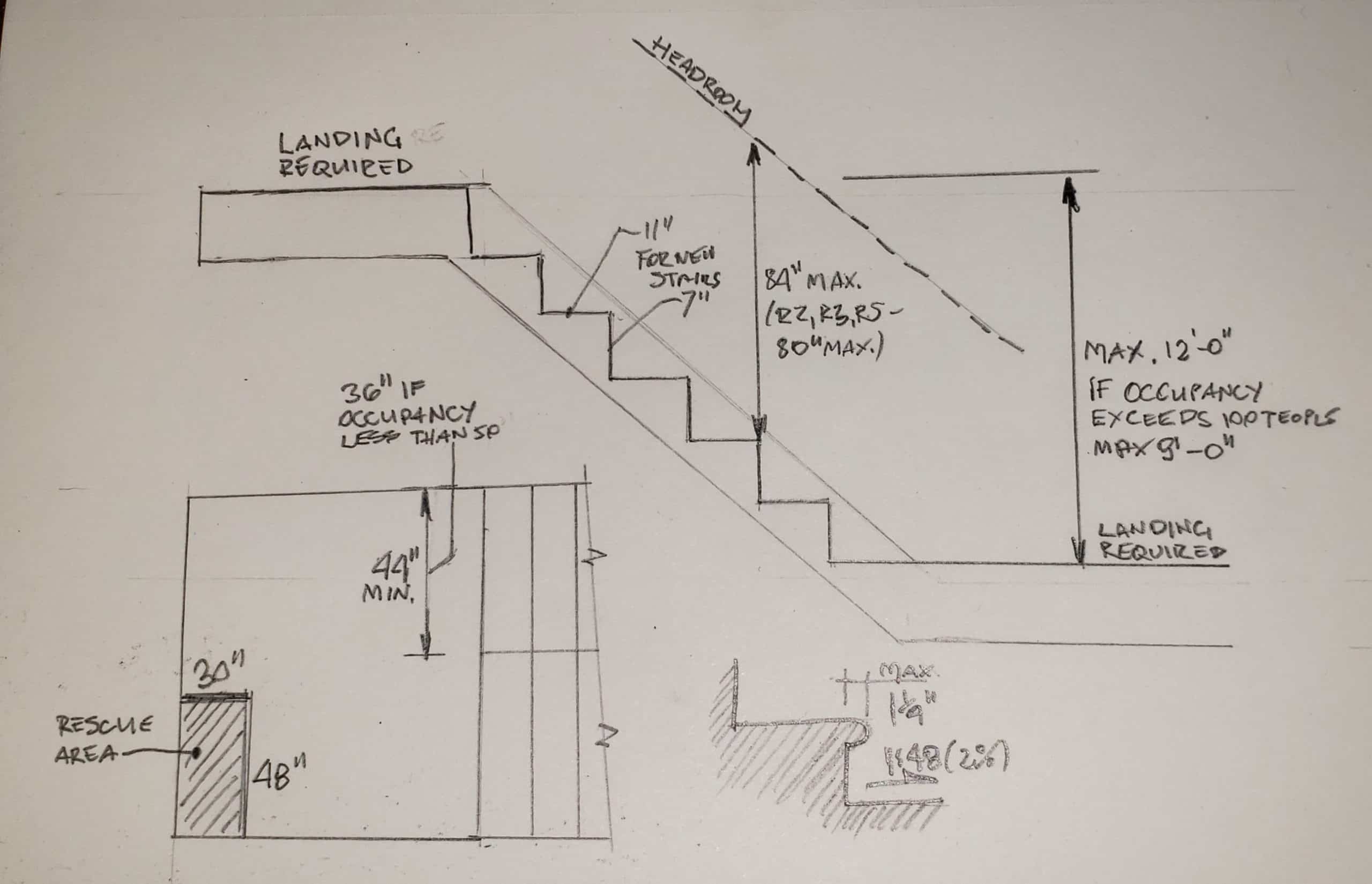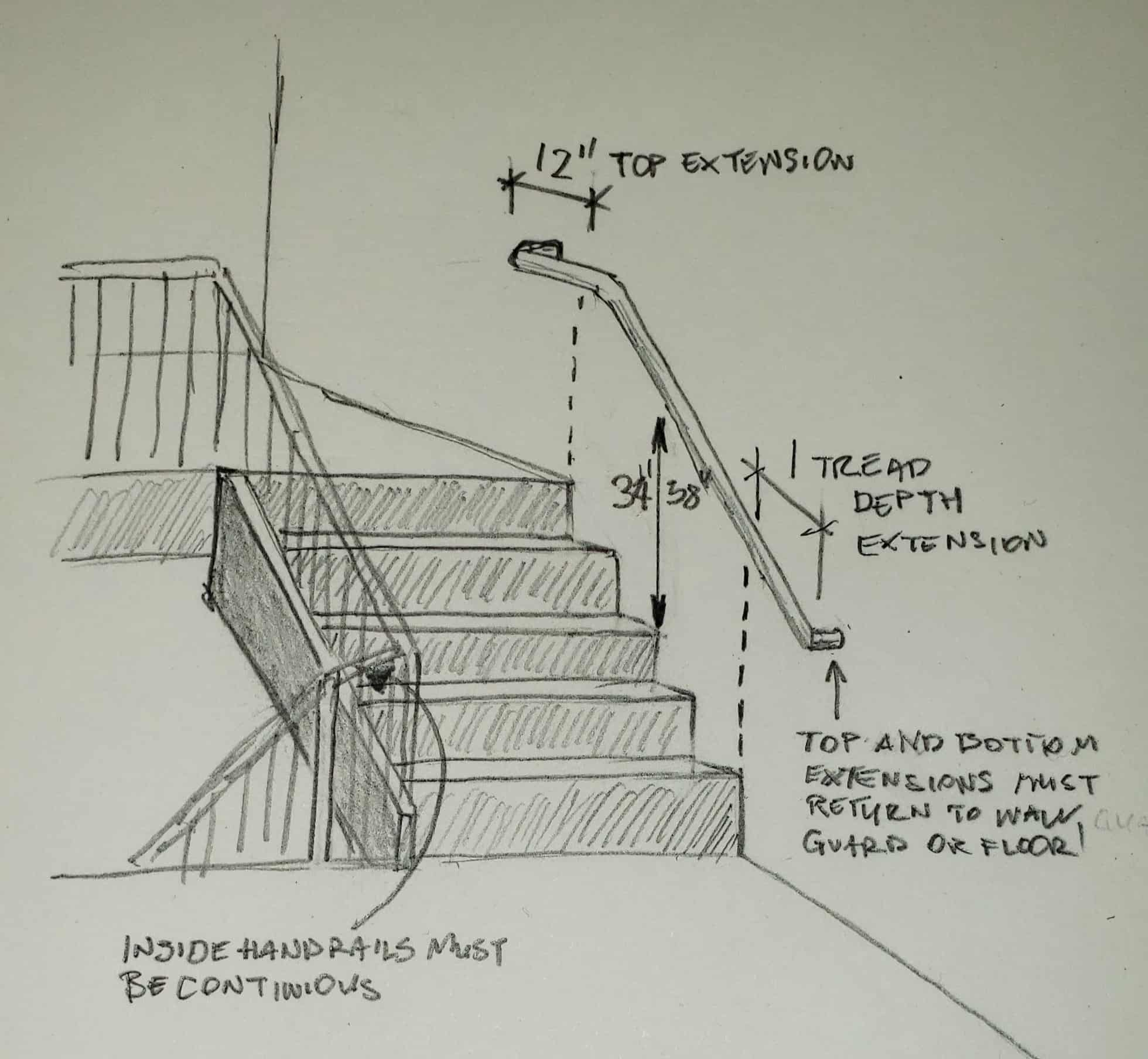When you make steel stairs in Chicago, you need to follow the 2019 Chicago Building Code which is International Building Code 2018 (IBC 2018) with amendments. You need to also follow 2010 ADA Standards.
So there is a lot to follow!
Below are the most important rules to be taken into consideration if you need to design or build steel stairs and pass an inspection.
You can access Chicago’s building codes on the city’s official website here. You can purchase the entire code book or just the amendments.
The codes pertaining to stairs construction you will find in Chapter 10 – Means of Egress.

Stairs

A stairway shall be constructed with the types of materials permitted by the type of building construction.
The vertical raise of the flight of stairs should not exceed 12 ft. between landings.
The vertical height of a flight of stairs between landings or between a floor and a landing must be 9 ft. or less when occupancy exceeds 100 persons.
Headroom should be a minimum of 84″. Exceptions include: R3, R5 occupancy, and dwelling units in R2 shall not be less than 80″.
If a stairway is used as an exit, it cannot have winder steps; generally, the must be wedge-shaped.
The landing shall be at the top and the bottom of each stair.
The landing width should, at a minimum, equal the width of the stairs.
If required, the rescue area should allow for wheelchair space of 30″x48″ (per 200 occupants).
Doors that open on the landings cannot reduce the landings to less than one-half of the required width.
The width of a stairway, including the landing, shall not decrease in the line of travel.
All stairs and corridors used as exits must be at least 44″ wide. Stair width is defined as the clear width of the stair tread used as the walking surface.
• Exception: Stairs and corridors in buildings with a total occupancy of 50 persons or less shall not be less than 36″ wide above the
grade level.An egress stairway shall have a minimum of 48″ between handrails if the building is not equipped with a sprinkler system.
Depending on the occupancy classification, the height of each stair riser must be 7.5″ or less, and they all must be equal in height. The minimum width of a tread must be 10″. The surface of treads and landings should not put a user in danger of slipping. All new stairs are required to have 7-inch risers and 11″.
The tread must be a minimum of 10″ deep.
The minimum width of a stairway shall be not less than 44″ (if not part of an egress). Exceptions: Stairways serving an occupant load of less than 50 shall have a width no less than 36″. Likewise with spiral stairs or where a platform lift or stairway chairlift is installed.
The nosing and raiser profile should be a minimum of 1/16″ and maximum of 9/16″.
The nosing projection should be a maximum of 1 1/4″.
Solid risers are not required for non-ADA stairs.
Outdoor stairs shall be made so that any water will accumulate on walking surfaces.
Treads cannot be sloped more than a ratio of 1:48 (2%).
Openings in a walking surface shall not permit the passing of a 1/2″ sphere.
Buildings with four or more stories should have stairs that extend to the roof if the roof slopes less than 3:12 (25%).
Handrails

The ends of handrails must return and join into the wall.
The height to the top of the handrail(s) must be between 34″ – 38″, measured from the stair tread or floor.
• If the width of the stairs is less than 44″, then a handrail must be provided on at least one side.
• If the width of the stairs exceeds 44″, handrails must be provided on both sides.
• If the width of the stairs is greater than 88″, an intermediate handrail(s) must be provided.Guardrails, installed at a minimum height of 42″ above the finished floor, cannot have balusters or a pattern providing a ladder effect. Balusters should be spaced 4″ apart.
The outside diameter of a circular handrail shall not be less than 1 1/4″ and not more than 2″.
The perimeter dimension of a Type I – non-circular handrail – shall not be less than 4″ and not more than 6 1/2″, with a minimum cross-sectional dimension of 1″ and a maximum of 2 1/4″, and edges with a minimum radius of 0.01″.
Handrail extensions shall return to a wall, guard, or walking surface, or shall continue to the handrail of the adjacent flight of stairs.
The minimum extension of a handrail is 12″ beyond the top raiser, and it shall continue to slope for the depth of one tread beyond the bottom raiser.
Guards are to be a minimum of 42″ high.
ADA Compliant Stair
If you need to detail an ADA-compliant stair, I have an Advance Steel template you can use here.

